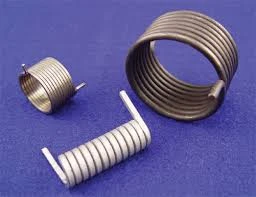
- Mobile Phone
- +8613931874955
- sales@cntcmetal.com
Durable High-Performance Extension Springs for Industrial and Heavy-Duty Applications
Heavy Duty Extension Springs A Comprehensive Overview
Extension springs are mechanical devices designed to absorb and store energy by exerting a force when extended. Among these, heavy-duty extension springs play a pivotal role in various industrial and automotive applications due to their robustness and reliability. This article delves into the characteristics, applications, and manufacturing processes of heavy-duty extension springs.
Characteristics of Heavy Duty Extension Springs
Heavy-duty extension springs are crafted to withstand significant forces and are made from high-grade materials such as stainless steel, music wire, and oil-tempered wire. These materials provide strength, resilience, and resistance to environmental factors, which is essential for applications that require durability and longevity.
A defining characteristic of heavy-duty extension springs is their coil diameter, wire diameter, and the number of active coils, impacting performance significantly. The design ensures that these springs can handle large loads while maintaining their original shape, mitigating the risk of breaking or deforming even under extreme conditions. Furthermore, their elasticity allows for maximum energy absorption, making them essential in applications where consistent force is necessary.
Applications of Heavy Duty Extension Springs
Heavy-duty extension springs are used in a vast array of industries due to their versatility. In the automotive sector, they are integral to components such as hoods, doors, and suspensions, where they manage the mechanical loads and enhance the overall functionality of the vehicle.
In the industrial realm, these springs are utilized in manufacturing machinery, conveyor systems, and equipment that require repetitive motion. They help in requiring stretching motion and can return to their original form, ensuring machines operate smoothly and efficiently.
heavy duty extension springs

Additionally, heavy-duty extension springs are found in the agriculture industry, where they play a crucial role in farm equipment, providing the necessary force in systems that require lifting and lowering actions. Their ability to endure harsh environmental conditions makes them ideal for outdoor applications, contributing to the reliability of agricultural machinery.
Manufacturing Process
The production of heavy-duty extension springs involves several meticulous steps that ensure each spring meets the required specifications. The process begins with selecting the appropriate wire material based on the intended application. Once the wire is chosen, it is fed into a coiling machine that accurately shapes the wire into the desired coil configuration.
After the coiling process, the springs undergo heat treatment to enhance their properties. This process, which usually involves heating the springs to a specific temperature and then cooling them gradually, increases the overall strength and elasticity. Subsequent processes may include grinding and polishing to remove any imperfections, ensuring a smooth surface finish.
Quality control is paramount in the production of heavy-duty extension springs. Manufacturers conduct various tests to assess tensile strength, load capacity, and fatigue resistance, ensuring that the springs not only meet but exceed industry standards.
Conclusion
Heavy-duty extension springs are indispensable components across multiple industries, providing strength, durability, and versatility in their applications. Their unique characteristics and robust construction make them suitable for high-stress environments, ensuring that they can perform consistently and reliably. As technology advances, we may see further innovations in the design and manufacturing of extension springs, leading to even greater efficiencies and applications. Understanding the essential role these springs play can help industries optimize their operations and maintain the integrity of their systems.
share:
-
Your Source for Concrete Wall Ties and Masonry AccessoriesNewsJul.10,2025
-
Unlocking the Power of Iron Wire for Every ProjectNewsJul.10,2025
-
Explore Advanced Chain Wire and Stainless Steel Mesh FencingNewsJul.10,2025
-
Discover the Benefits of Annealed Wire ProductsNewsJul.10,2025
-
Discover China Stainless Steel Wire Mesh SolutionsNewsJul.10,2025
-
Build with Confidence Using High-Performance Masonry AccessoriesNewsJul.10,2025
-
Why Sacrificial Formwork Is Redefining Underground ConstructionNewsJun.06,2025



















